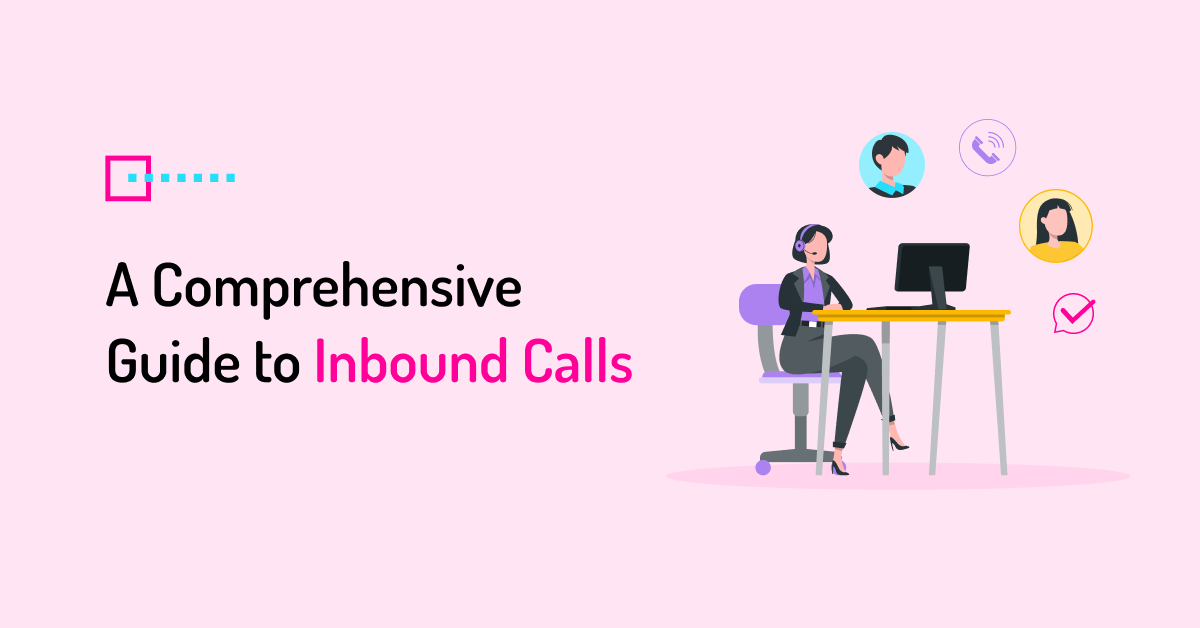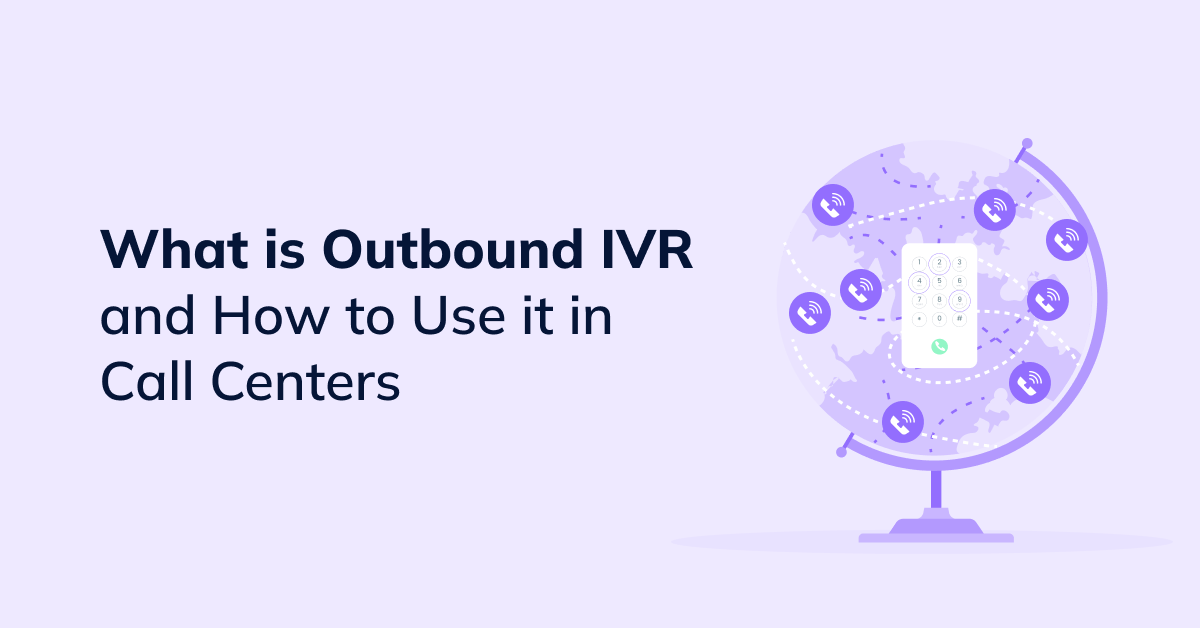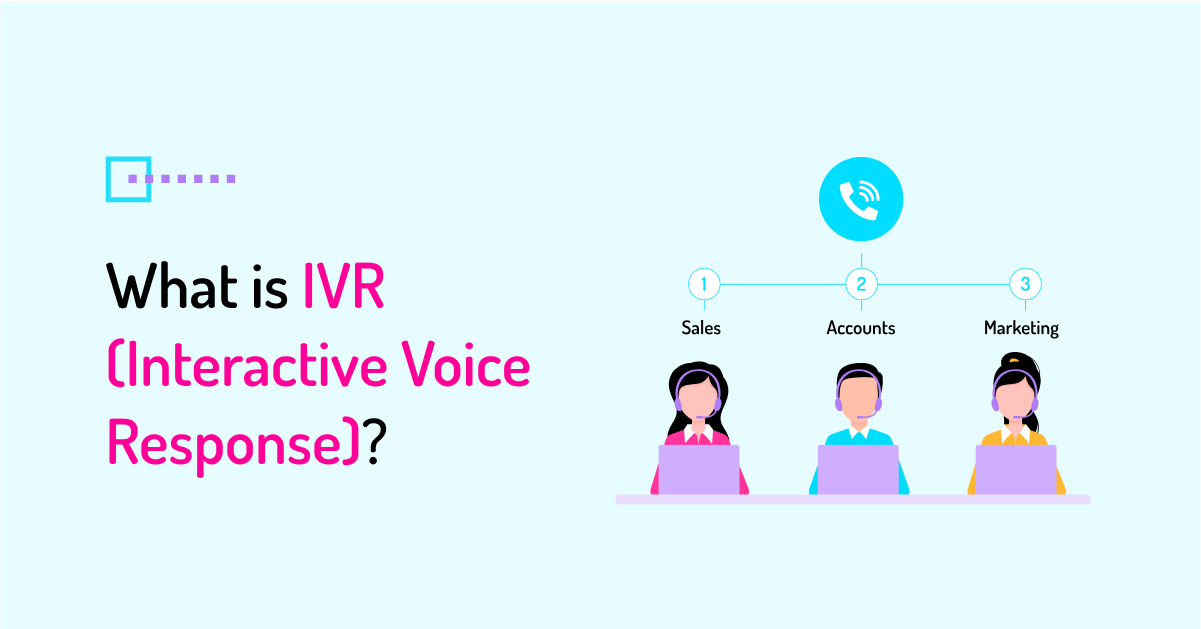Handling inbound calls from existing or potential customers is the primary function of inbound call centers. A business may receive inbound phone calls for many reasons – and the agent’s ability to handle these calls quickly, professionally, and effectively will often make the difference between an outstanding experience and an average one, impacting customer satisfaction and customer retention. Resolving customer queries on the first contact and delivering an exceptional customer service experience are the main responsibilities of inbound call center agents.
What are Inbound Calls?
Inbound calls, as the name suggests, the incoming calls initiated by customers rather than by the company, as in outbound call centers. They are typically made by existing customers who have questions or experience issues with a company’s product or service.
Once an inbound call is connected, routed to an appropriate agent, and accepted, the agent will try to resolve the customer’s issue during the first interaction. If that’s not possible, the agent may need to follow up with the customer later or escalate the call immediately to another department (e.g., tech support or billing) or a manager.
What is an Inbound Call Center?
Inbound call centers receive incoming phone calls from customers or prospects. They can either be operated in-house or outsourced to third parties. Customers can call a company by dialing their phone number or even initiate a call from a company’s website through the Click-to-Call technology.
Based on Automatic Call Distribution (ACD) systems used in inbound call centers, these customer calls can be screened and routed to departments or even specific agents according to certain pre-defined routing rules such as call queue length, caller’s language preferences, agent availability, agent skills, case severity, etc.
What is the Difference Between Inbound and Outbound Calls?
- Inbound calls are initiated by customers or prospects who can call for different reasons, such as inquiring about a company’s offerings, getting technical support, or reporting an issue with the product or service. These types of calls are mostly customer service related.
- Outbound calls are initiated by outbound call center agents in sales teams for purposes like lead generation and verification, up-selling or cross-selling products to existing customers, proactive service and follow-ups on previous calls, collecting feedback, and conducting market research.
Types of Inbound Call Center Calls
Inbound call center services are crucial to maintaining high customer satisfaction levels. Some of the most common types of calls inbound call center agents may handle are:
- Customer service inquiries: Customers may call when they have questions, concerns, or need help with the products/ services they’ve purchased from a business.
- Account and billing inquiries: These calls are made by existing customers to inquire about their account, report a billing problem, or manage upgrades/ renewals.
- Technical support calls: These calls are addressed to technical support department agents who help customers resolve tech-related issues.
- Sales inbound calls: These calls are made by potential customers interested in purchasing a product/ service, or when they need assistance placing an order.
How to Effectively Manage Inbound Calls
Handling inbound calls efficiently and ensuring your customer service team delivers consistently great customer experience requires a combination of effective call center technology, well-established processes, and knowledgeable agents.
They must have profound knowledge of a company’s products or services to be able to instantly understand a customer’s problem and offer an adequate solution. In addition, agents should be equipped with all the necessary knowledge and resources to resolve customer calls quickly and efficiently while maintaining a high first call resolution rate.
Managing inbound calls also demands having specific soft skills, including effective listening, patience, strong communication skills, empathy, flexibility, and problem-solving skills. These skills can be developed through ongoing call center training and coaching.
How to Build an Inbound Calling Strategy
Building an effective inbound call strategy requires providing agents with the right contact center software system and adjusting it to meet your customer service objectives and the needs of your customers. It’s also critical to continuously track your inbound call center metrics and improve your strategy to stay up-to-date with new technologies and call center industry best practices.
What Technologies are Used in Inbound Call Centers?
Inbound call centers rely on multiple technologies to efficiently distribute calls and handle large call volumes while providing excellent customer service. These technologies include automatic call distribution (ACD) and Interactive Voice Response (IVR) systems, quality monitoring, reporting, and analytics tools, workforce management tools, integrations with CRM, and other business apps. The two most critical inbound call center technologies are:
- Automatic Call Distribution (ACD): ACD is the foundation of inbound call center solutions. It’s an automated call routing system that uses specific algorithms to ensure incoming calls are routed to the most suitable agents based on the type of call, agent skills, availability, or other pre-defined rules.
- Interactive Voice Response (IVR): IVR is an automated phone system that enables businesses to interact with customers through a series of automatic menu options. Callers can navigate the IVR system using their phone’s keypad or voice commands and be directed to self-service options or connected to the most appropriate agent.
What is Inbound Call Center Software?
Inbound call center software allows agents to efficiently handle high call volume with the help of Interactive Voice Response (IVR) and Automatic Call Distribution (ACD) systems. The software typically integrates with a business’s CRM system. It means that whenever agents receive calls, they can instantly view all customer information, including previous call history, which enables them to deliver better customer service and a more personalized experience.
What Metrics to Track in Inbound Call Centers?
Regularly tracking call center metrics and KPIs helps managers understand how individual agents, departments, and a call center as a whole is performing, identify areas for improvement, and make data-driven decisions. When choosing which metrics to track, it’s important to strike the right balance between measuring too few and too many. Some of the vital metrics inbound call centers should pay attention to:
- First Call Resolution Rate (FCR): The percentage of incoming calls successfully resolved during the first interaction.
Read what is FCR and how to measure it in our complete guide. - Average Time in Queue: The average amount of time callers spend on hold before being connected to an agent for the first time.
- Average Call Duration: The average amount of time an agent spends on a call with the customer.
- Average Hold Time: The average amount of time callers spend on hold during a conversation with an agent.
- Average Handle Time (AHT): The average amount of time to handle a call from start to finish, including hold times and after-call work time.
Find out more about what is AHT and how to reduce it. - Average After-Call Work Time: The average amount of time it takes an agent to complete post-call-related work.
- Call Abandonment Rate: The percentage of calls disconnected by callers before being answered by an agent.
- Service Level: The percentage of calls answered within a specified time period.
- Agent Occupancy Rate: The percentage of time an agent spends handling calls vs. waiting for calls (idle time).
- Customer Satisfaction Score (CSAT): The percentage of customers satisfied with the service level received.
For a deeper understanding of these and more metrics, check our detailed inbound call center metrics guide.
FAQs
What Does an Inbound Call Mean?
Inbound calls are initiated by customers or prospects rather than call center agents. Customers may call either by dialing a company’s number or initiating a call through the click-to-call button right from a company’s website. These calls are usually directed towards customer service departments and answered by inbound call center agents.
Does Inbound Mean Incoming?
In the call center context, inbound calling refers to incoming calls received by agents in inbound call centers. Unlike outbound calling, which is initiated by call center reps, inbound calls are made by customers or prospects, primarily for customer service and support.
How Many Calls Should an Inbound Call Center Agent Handle?
The number of calls an inbound call center rep can handle per day can significantly vary depending on the type of business, call center size, context, and call complexity. To ensure agents can manage more calls without compromising on the quality of customer experience provided, they need to be equipped with the right call center software solution and well-trained.
How to Effectively Handle Inbound Calls?
To effectively handle inbound calls, agents must be equipped with the right tools (inbound call center software featured with automatic call distribution, IVR, and CRM integration) and have access to proper knowledge and resources. They also should be trained in the most critical soft skills like effective communication, empathy, and problem-solving.





 +18889082995
+18889082995
 +442036084160
+442036084160
 +97237237006
+97237237006